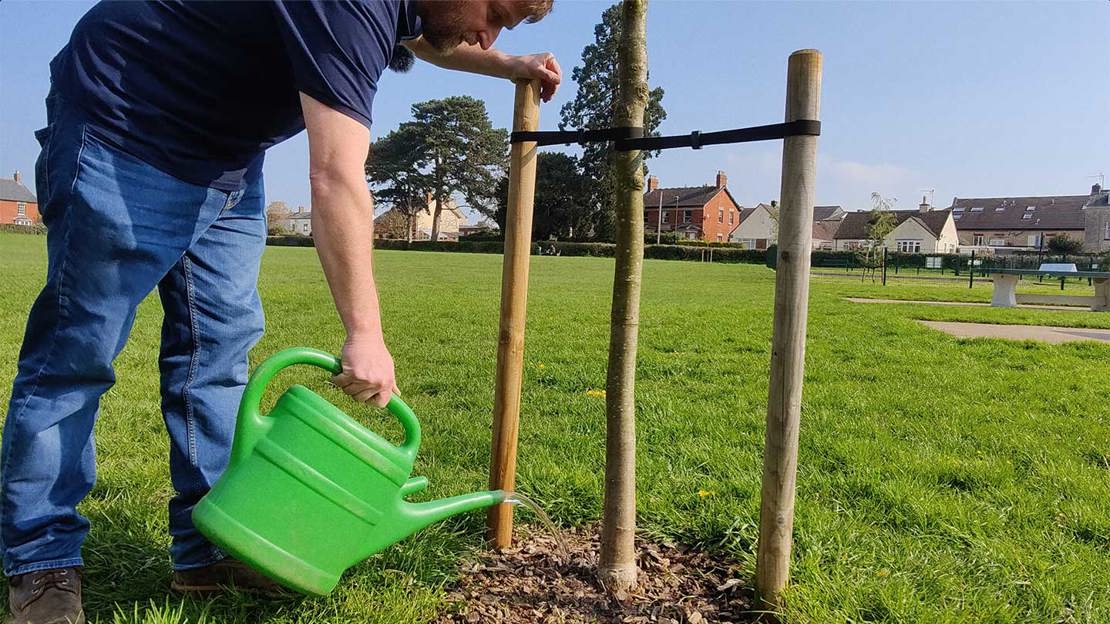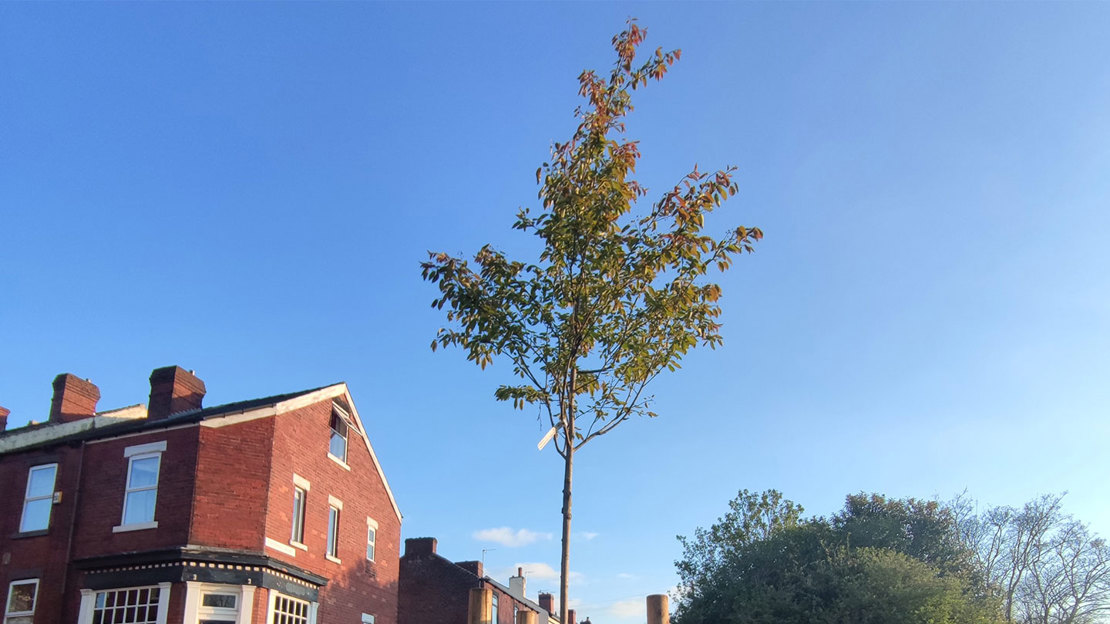Climate action: water your street trees

Senior PR officer
Rising temperatures and dry spells are leading to an increasing loss of new street trees, but the nation can do its bit, urge tree groups.
The Arboricultural Association is joining forces with the Woodland Trust and local authority tree officer associations to rally the UK public to water their new street trees using recycled rainwater or grey water, such as washing up water.
According to the Met Office, 2022 was the warmest year on record and the UK’s total rainfall fell persistently below average for the year, creating challenging conditions for newly planted and younger trees to thrive.
John Parker, chief executive of the Arboricultural Association, said:
"Planting a tree is just the start of the story. The health and survival of new urban trees is threatened by increasingly dry weather. It is recommended that newly planted trees are given 50 litres of water per week during the summer months, for the first three years. You can help ensure healthy trees for the future over the summer months by watering trees near you."

Since setting up the annual watering campaign in 2020, the Arboricultural Association has brought on board an ever-expanding list of groups to take up the challenge.
Steph Mullen has set up a watering group in Sheffield as part of her work with Kids Plant Trees. She said:
"Helping trees to thrive is one of the most rewarding things you can do – and kids love trees so it’s a brilliant way to build a connection with nature. Not everyone has a garden or easy access to wild spaces, but watering street trees is something that everyone can do. Every tree supports a range of wildlife, so whether it’s one tree or many, it’s great to do something practical that really makes a difference."
To help spread the message wider, the Woodland Trust has come on board this year.
Catherine Nuttgens, head of the Woodland Trust’s urban tree programme, explained:
"Trees are crucial to our wellbeing by cooling our towns and cities and improving air quality, so we need to not only plant more but look after those we already have. While in rural settings newly planted saplings and woods can take care of themselves and adapt, the challenging conditions presented by living in the built environment means trees in our streets and urban areas need a bit more TLC . It’s a fun job to do with the kids or make it a post tea-time routine to water the trees. It can rally community spirit too if estates or streets club together."
The Government has committed to planting millions of trees to help meet climate and nature targets, increasing tree cover in England from 14.5% to 16.5% by 2050.

Top tree watering tips
- Requirements vary depending on a number of factors such as species and location, but a general rule is that new urban trees should receive at least 50 litres of water per week in May, June, July and August.
- Watering should ideally be carried out in the early morning or evening.
- Where possible, water should be sustainably sourced. Harvested rainwater is ideal, but bath water, or water which has been used for the washing up, is also suitable.
- You can find out more and order your own tree watering tags to encourage your community to get involved at trees.org.uk/watering
Notes to editors
- Woodland Trust press office: 0330 333 5313 or email nataliestephenson@woodlandtrust.org.uk
Arboricultural Association press contact: Stephen Hodsman (stephen@trees.org.uk)
About the Woodland Trust
The Woodland Trust is the largest woodland conservation charity in the UK. It has over 500,000 supporters. It wants to see a UK rich in native woods and trees for people and wildlife.
The Trust has three key aims:
- protect ancient woodland which is rare, unique and irreplaceable
- restore damaged ancient woodland, bringing precious pieces of our natural history back to life
- plant native trees and woods with the aim of creating resilient landscapes for people and wildlife.
Established in 1972, the Woodland Trust now has over 1,000 sites in its care covering approximately 29,000 hectares. Access to its woods is free so everyone can benefit from woods and trees.
About the Arboricultural Association
The Arboricultural Association is the leading organisation in the UK for tree care professionals working in all areas of arboriculture, including central and local government, consultancy, contracting, management, production, policymaking, research and education. It has more than 3,000 members in the UK and around the world, and is increasingly recognised as an international, as well as a national leader in arboriculture. The Association is dependent on its members, its volunteers – including Trustees, Committee members and Branch officials – and a dedicated staff team operating out of the Malthouse in Stonehouse, Gloucestershire. Its vision is to inspire, support and promote the tree care community for a society that better appreciates and cares for trees.
Tree Watering Campaign
The Arboricultural Association worked with tree officers across the country to develop new materials for a tree watering campaign which was launched in May 2020. This collaborative project with the London Tree Officers Association (LTOA), Municipal Tree Officers Association (MTOA) and Association of Tree Officers (ATO) has resulted in an information poster and watering tags which can be printed at home and affixed to tree stakes or tied to the tree. These are free to download and can be found online at www.trees.org.uk/watering
Young Tree Establishment Guide
The Association has a free-to-download Guide to Young Tree Establishment, which expands on the watering guide and covers key areas including 'Why plant a tree?', 'Where to plant a tree?', 'What tree to plant?', 'How to plant a tree' and 'Young tree aftercare'.
Evidence
According to the most recent survey of street tree mortality rates in England, '30% of newly-planted street trees die within the first years of planting… with rates often reaching as high as 50%'*
Citation:
*Britt & Johnson (2009). Trees in Towns II: A new survey of urban trees in England and their condition and management. Department for Communities and Local Government/ Forestry Commission.
According to a 2021 US study, 'The first several years after planting a tree, referred to as the establishment period, are recognised to have the highest annual mortality rates… the results of this research showed the highest mortality rates were experienced by all trees planted in park/public spaces'.*
Citation:
*Wattenhofer, DJ., and Johnson, GR., (2021). Understanding why young urban trees die can improve future success. University of Minnesota.

